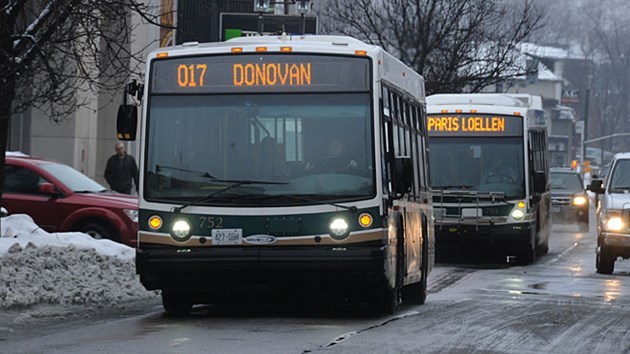Fewer routes, improved Sunday and late-night service and a more direct, express-like trips to popular areas are some of the sweeping changes being proposed to boost ridership at Greater Sudbury Transit.
City council will be asked to approve the next stage of the Greater Sudbury Transit Action Plan at their meeting Tuesday: bringing the draft plan to the public to get their reaction.
The report by Michelle Ferrigan, the city's director of transit services, says in the report that a major part of the proposal is to review current routes.
“Greater Sudbury’s existing route structure is confusing, hard to understand for new users and dilutes potential frequency by spreading service across many streets,” the report says. “Focusing heavier ridership service on key corridors with complementing feeder services would enable the system to put more frequency where it is needed most, shorten travel times and provide the time necessary to improve reliability.”
A more innovative approach is needed to serve outlying areas, the report said, particularly for Handi-Transit users to use services such as transcabs to link up with the conventional system.
The goal is to make service better for current users, and to make transit a more attractive option for new users looking to commute to work and back home each day. Currently, residents make more than four million trips by bus each year.
To do that, the plan advocates reducing the current number of routes to 21 from 38, increasing the how often buses stop at each route while decreasing the need to transfer to other buses at the downtown transit terminal.
Reducing the number of routes will make it easier for customers to understand the services, plan their trip and navigate the system, the report says.
“To the extent possible, it will also eliminate one-way loops and low performing deviations to make service as direct as possible.”
A common complaint from current users is the drop in service on Sundays and later in the evening, an issue the plan seeks to address.
“Currently, the existing system uses separate routes and numbering depending on when service is operating,” the report said. “The proposed revised service makes routing and numbering consistent throughout all days. It also increases the level of Sunday service, a key point of feedback from the community.”
Other elements of the plan include:
- Frequent routes to provide the most direct and highest frequency services to meet the most common travel patterns and highest ridership areas of the city. Mobility Hubs will be created along the routes, providing opportunity to co-ordinate other levels of service. This route layer becomes a blueprint for what could evolve into a Bus Rapid Transit system.
- Core routes to offer support to the higher frequency services in the urban core.
- Neighbourhood routes with slightly lower frequency to provide service closer to home for those who may be less able to access the frequent and core routes.
- Community Connectors to provide clear and easy-to-use connection between outlying communities and key destinations in the core.
- On-Demand (TransCab) Service Areas to provide convenient on-demand travel between homes in less-populated areas to Community Connectors or HandiTransit services.
- Handi-Transit throughout the area for those eligible passengers with disabilities that prevent them from using the other services some or all of the time.
- The plan also calls for more bus shelters and benches at bus stops, more scheduling information at terminals, lower fares for regular users, easing time restrictions on transfers, as well as allowing transfers to be used “on any route and any direction.”
If approved by council, the draft plan would head to public consultations, and after feedback is factored in, would be revised and presented to council again for final approval.
